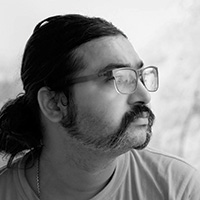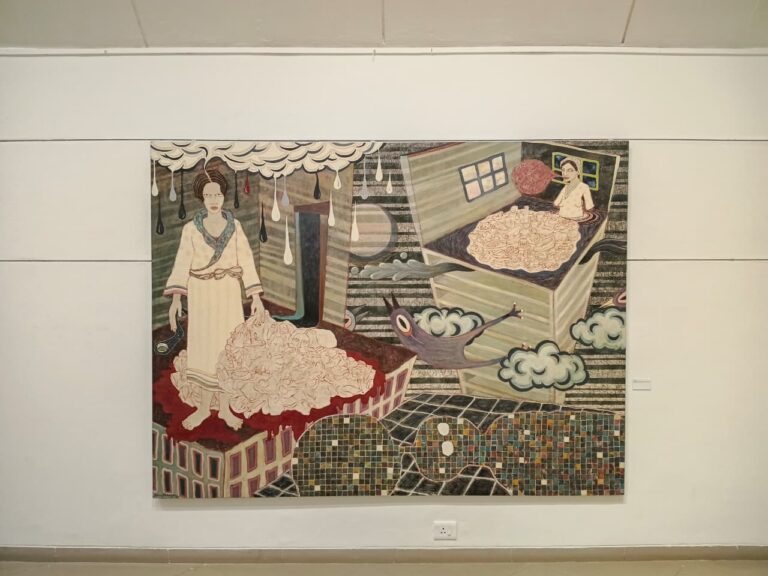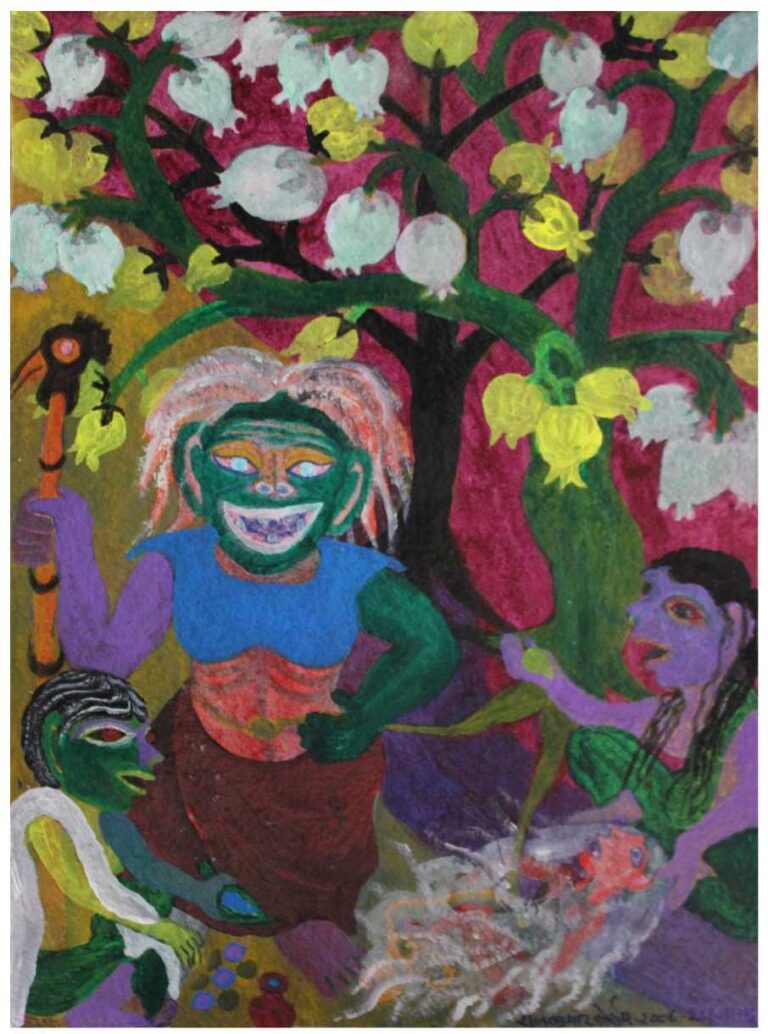As suggested by Nam June Paik, that ‘noise’ occurred in two-way communication, and mistranslation was also a way of delivering messages. Within this system, Paik gave equal importance to both the role of the sender and that of the receiver.

The Shilpakala indoor courtyard is around 40 by 60 square feet and was the hub of performance space in the 18th Asian Art Biennale, with three floors of balconies surrounding it with curious viewers occupying them like an arena. In Bangladesh, performance art practice started in the early nineties, and one of the prominent ones were Mahbubur Rahman, the curator of ‘Live Stream’- the performance section of this Biennale. Performance art as an art form is still in a nascent stage of recognition there. Some artists felt the urge to confront the orthodox art forms during that time and intended to experiment with their own body and the elements around them. It has taken a long time to break the barriers for the artists to introduce performance art to the local audience. Over the years, several alternative artist’s platforms, as well as established private art organisations and recently the government institutions, have been trying to support performance art as a prominent art form in Bangladesh.

Since last 25 years, artists identify themselves addressing multiple audiences through diverse platforms (commercial galleries, museum spaces, artist talks, Youtube, etc). The indoor/outdoor divide seems less crucial an aspect of an artist’s work. Artists today are as likely to make works outdoors as they are indoors, in part due to the multiplication of biennales and exhibitions. What has truly weakened the idea of public space, however, is the vast reconstructing of the borderline between public and private in the last decades – under the pressures of a neoliberal economic world stage, on the one hand, and digital technologies and social media, on the other. Both evolutions have unsettled the existence of ‘public space’ and both have an intimate relationship with societal behaviour, order and performance.
In the ‘Live Stream’ segment, presentation of artworks (performance documented previously), plays a major role in interaction with the audience. Pre-production of the participating artists is displayed via photography and videography at the gallery spaces to create a forum for new discourses. The curator believes that performance art as a temporary and short-term material is unquestionably transferable as a permanent material by using post products of stills, videos and objects used during the performance. This can help fill in the large gaps between artist and audience by making the artist’s statements about their work accessible to the public; providing visual documentation and enlarged exposure of artist’s performances.

The Bangladeshi and international performance artists responded to the gesture and the socio-political events which characterized the one-off performances that were often as brutal and painful as the protests taking place across the country. The simplicity and clarity of these actions were in direct reaction to the meticulous analysis that these artists were making of the art process, the mechanics of the art world, and the very existential foundation of being an artist. Such critical observations did not allow for instant acceptance or easy understandability, yet at the same time, the work being ‘live’ and decidedly unconventional had a public following. Above all, it raised questions, disturbed the public, and allowed for few forced answers. It was intentionally ‘difficult’ in that an underlying premise was to avoid the comfort that painting or sculpture might generate. Moreover, its ephemerality, its very intangibility pointed always to an ideology of art, a theoretical position in regard to culture, which in turn created an evaluation of criticism and a review of the traditional notion of the artist as a sensitive but inarticulate creature.

In a young country like Bangladesh, I witnessed varied performances, some addressing the urban issues of identity, culture, women, environment to rural representations of tribal culture and its slow death. The notion of food politics was prevalent in multiple performances. There was an interesting collection of international artists whose works ranged from identity, sexual violence, political censorship and racism. ‘Live Stream’ was the source of life in the Biennale. There were 16 Bangladeshi artists and 11 international artists who entwined creative action and performances for a cross-section of viewers.















